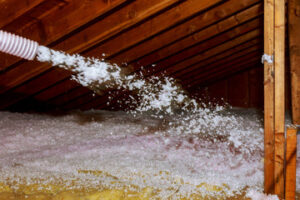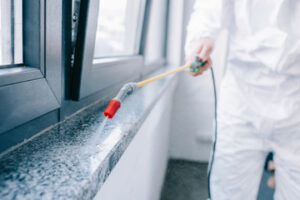Ceiling Insulation Perth keeps the warm air inside your home during winter, and prevents cool air from entering at high temperatures. It also promotes energy conservation and helps to reduce your electricity bills.

Insulating your ceilings is the simplest way to improve indoor comfort and save energy. This is because heat rises, and most of it escapes through your ceiling, and into the roof or loft space.
When properly installed, insulation minimizes heat transfer between your living space and the outside air. This reduces the need for artificial heating and cooling, cutting energy consumption and decreasing household utility bills. Insulation also helps to reduce noise levels, making it an important part of the overall comfort and sustainability of your home or commercial building.
Depending on the type of insulation used, ceiling insulation can provide a number of benefits. Here are some of the most common:
Keeps Cool in Summer
On a hot Michigan day, the sun’s heat can penetrate your attic and seep into your living spaces, making them feel uncomfortably hot. Ceiling insulation keeps the heat out, which allows your air conditioner to work less and saves you money on your energy bills.
Improves HVAC Efficiency
When it’s cold in Michigan, your furnace disperses warm air through your ductwork and exits into your living spaces via vents. If cracks or poorly insulated spots exist in your ceiling, much of this warmth can escape, forcing your heater to operate more frequently to maintain a comfortable temperature. Ceiling insulation slows down the flow of warm air, reducing the workload on your furnace and increasing its lifespan by 10 to 20 years.
Better World Builders offers a wide range of affordable ceiling insulation solutions that can be installed in new construction homes, finished rooms, and retrofitted attics or crawl spaces. Rigid foam boards and fiberglass batts are popular options because they’re easy to install and offer good thermal resistance. If you have a finished attic, spray foam insulation is available and offers an airtight seal that significantly boosts energy efficiency.
Blown-in insulation is another option. This method uses a blower to push loose-fill insulation into the space, which is ideal for hard-to-reach areas and irregularly shaped spaces. This method is relatively quick and easy to install, but its effectiveness can decrease over time.
No matter which type of insulation you choose, the right amount will make a significant difference in your energy savings and comfort. Rubcorp is committed to helping Michigan homeowners and business owners save energy and cut costs by ensuring their buildings are adequately insulated. Contact us today to learn more about our affordable insulation services in Kalamazoo and beyond.
Increased Comfort
As the bulk of your energy is lost through the roof and ceiling space, insulating it will significantly reduce the amount of money you’ll have to spend on heating and cooling. The thermal insulating barrier that ceiling insulation creates stops warm air from escaping during winter and cool air from leaking during summer, making your home or office much more comfortable year-round.
A well-insulated ceiling is also an excellent sound insulator. It can prevent outside noises from penetrating your living spaces, and it can also stop echoes and unwanted sounds from disturbing your enjoyment of a TV show or movie. For instance, if you like to watch movies in your home theatre system, dense rock wool insulation can improve your cinematic experience by effectively reducing external noises and internal echoes.
If you’re considering buying a new property, having recently installed and properly-fitted ceiling insulation can be an attractive selling point for your home. It can give your home a competitive edge over those that don’t have adequate insulation, and it can also boost your home or office’s Energy Performance Certificate (EPC).
Choosing the right ceiling insulation material is vital to ensure that your energy savings are maximised. A professional installer can help you decide on the best option for your home or business. For example, a homeowner in a hot climate might choose reflective insulation, which reflects radiant heat and makes it more effective in warming their home during the daytime.
Spray foam insulation is a quick and effective option for insulating your ceiling, as it expands to fill gaps and cracks, creating an airtight seal that significantly increases the R-value of your ceiling. Closed-cell spray foam can last the lifetime of your home or office, resists moisture and is highly durable, so it’s an excellent choice for insulating your ceiling. The only drawback is that spray foam is more expensive than other types of insulation. However, it provides an excellent return on investment because you’ll save money on energy bills over the long term. This insulation also contributes to a greener planet by reducing the need for your HVAC system to work overtime.
Reduced Noise
When most people think of insulation, they imagine it helping to keep their homes warm during the winter and cool in the summer. But insulation has many additional benefits, including reducing noise and improving acoustics.
Depending on the type of insulation you choose, it can help reduce both airborne and impact noise. Airborne noise comes from sources such as music, television and loud conversations. It can also come from outside, such as traffic and construction work. Insulation can help reduce these types of noises by absorbing the sound waves and preventing them from transferring through walls, floors and ceilings.
Some insulation materials, such as polyester, also have excellent acoustic properties. This dense material creates a layer that helps absorb and block sound, making it a great choice for those who live in noisy areas. Other types of insulation, such as fiberglass and spray foam, can also be used to help reduce noise. Spray foam, for example, is a soft material that can be sprayed between the joists in your ceiling. It can fill gaps and prevent heat from escaping during the summer.
Another benefit of insulation is that it can help protect your home from the noise caused by rain and wind. If you live in an area that experiences frequent storms, insulating your ceiling can help to keep the noise from disturbing you when you’re trying to sleep or relax. Insulating your roof can also help to reduce the sound of rainfall hitting your roof, creating a more peaceful atmosphere in your home during storms.
Choosing the right type of insulation for your home is important, as different types of insulation have different strengths and weaknesses. For instance, some insulation is made from recycled materials, which can be beneficial for those who are interested in being environmentally friendly. Other types of insulation, such as cellulose and fiberglass, can also be effective for those who are looking for a more budget-friendly option.
Whether you’re building a new home or undergoing renovations, incorporating acoustic insulation is an easy way to improve the comfort of your home and reduce energy bills. The best time to install insulation is during the early stages of construction or renovation, as this will ensure that it’s placed properly without disturbing existing structures.
Reduced Energy Bills
Ceiling insulation is one of the best energy saving solutions available, which helps to reduce your heating and cooling costs. It helps to maintain a more stable room temperature throughout the year and provides long-term cost benefits that will save you money on your energy bills and help to protect our environment.
Poorly insulated homes lose up to 70 percent of heat through the ceiling and walls, which results in increased energy consumption. By installing insulation in your home you can significantly cut your energy usage and lower your electricity, gas and oil bills.
Insulation is made from different materials depending on your needs and budget, including fiberglass batts, cellulose (recycled paper), and spray foam. It’s a good idea to speak with an expert to work out which option is best for you and your home.
Choosing the right type of insulation is important to ensure that your home is properly insulated and air sealed. For example, if you live in an area with high temperatures, you may need to use a higher density insulation than for areas with a mild climate. It’s also a good idea to have any ceiling penetrations, such as pipes and vents, capped or sealed off.
The main benefit of installing ceiling insulation is that it helps to improve the energy efficiency and comfort of your home by reducing the need for heating and cooling, as well as reducing noise levels. It can also reduce the maintenance and replacement costs of your existing heating and cooling system, allowing it to operate at its optimal level longer.
An insulated ceiling prevents direct sunlight from drastically increasing the indoor temperature, and it slows the transfer of heat, which is especially beneficial during the summer when the roof can absorb a lot of solar radiation. The reduced need for heating or cooling and the reduced use of your air conditioning system means that you will have lower energy bills throughout the year.
In addition to reducing the need for heating and cooling, ceiling insulation also offers fire safety benefits. It stops the spread of flames from one room to another, and it also prevents the growth of mould and mildew which can affect health and quality of life. It’s a great investment for any residential or commercial property and is easy to install during new construction.


